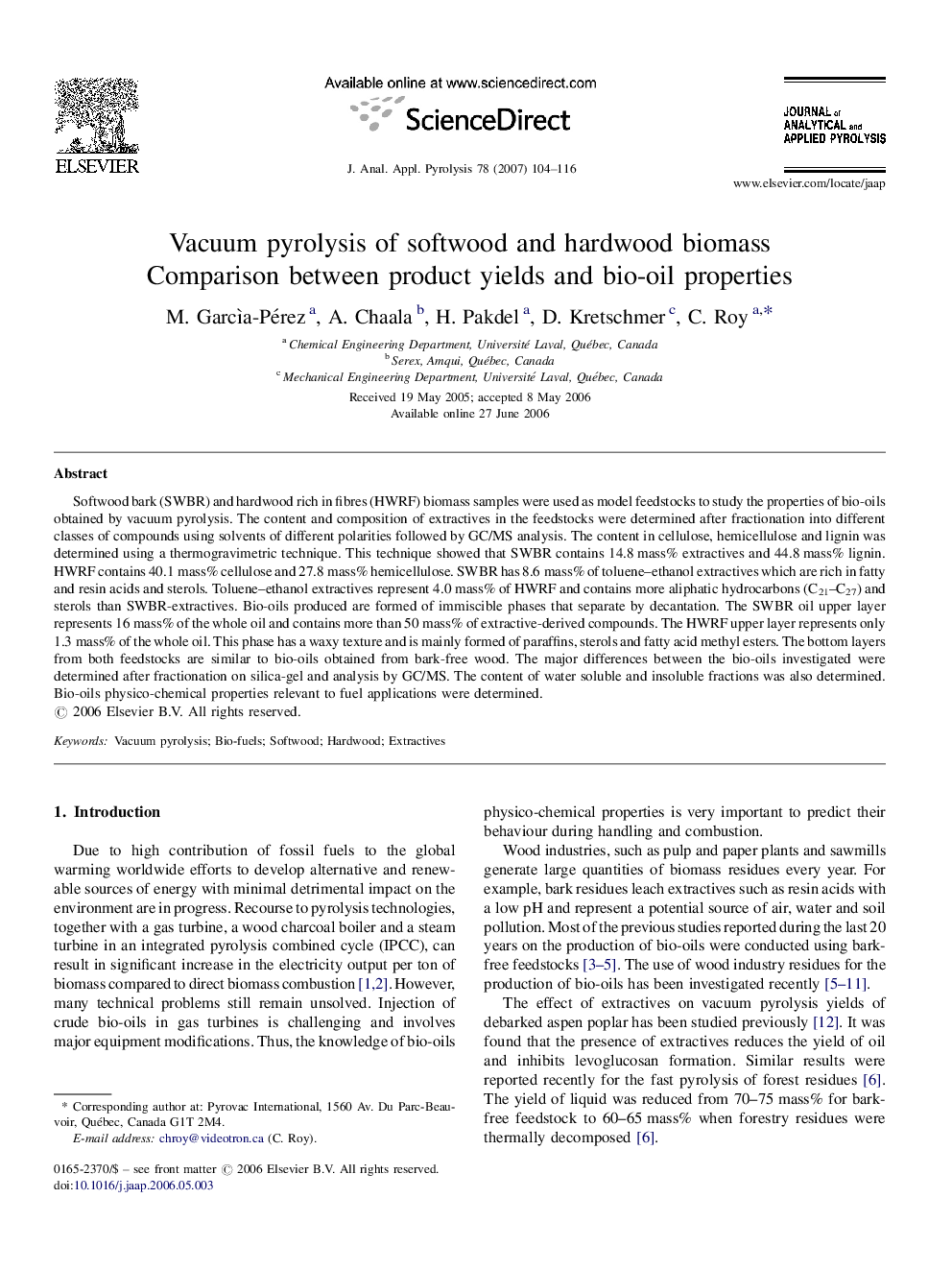| کد مقاله | کد نشریه | سال انتشار | مقاله انگلیسی | نسخه تمام متن |
|---|---|---|---|---|
| 1197901 | 964668 | 2007 | 13 صفحه PDF | دانلود رایگان |

Softwood bark (SWBR) and hardwood rich in fibres (HWRF) biomass samples were used as model feedstocks to study the properties of bio-oils obtained by vacuum pyrolysis. The content and composition of extractives in the feedstocks were determined after fractionation into different classes of compounds using solvents of different polarities followed by GC/MS analysis. The content in cellulose, hemicellulose and lignin was determined using a thermogravimetric technique. This technique showed that SWBR contains 14.8 mass% extractives and 44.8 mass% lignin. HWRF contains 40.1 mass% cellulose and 27.8 mass% hemicellulose. SWBR has 8.6 mass% of toluene–ethanol extractives which are rich in fatty and resin acids and sterols. Toluene–ethanol extractives represent 4.0 mass% of HWRF and contains more aliphatic hydrocarbons (C21–C27) and sterols than SWBR-extractives. Bio-oils produced are formed of immiscible phases that separate by decantation. The SWBR oil upper layer represents 16 mass% of the whole oil and contains more than 50 mass% of extractive-derived compounds. The HWRF upper layer represents only 1.3 mass% of the whole oil. This phase has a waxy texture and is mainly formed of paraffins, sterols and fatty acid methyl esters. The bottom layers from both feedstocks are similar to bio-oils obtained from bark-free wood. The major differences between the bio-oils investigated were determined after fractionation on silica-gel and analysis by GC/MS. The content of water soluble and insoluble fractions was also determined. Bio-oils physico-chemical properties relevant to fuel applications were determined.
Journal: Journal of Analytical and Applied Pyrolysis - Volume 78, Issue 1, January 2007, Pages 104–116